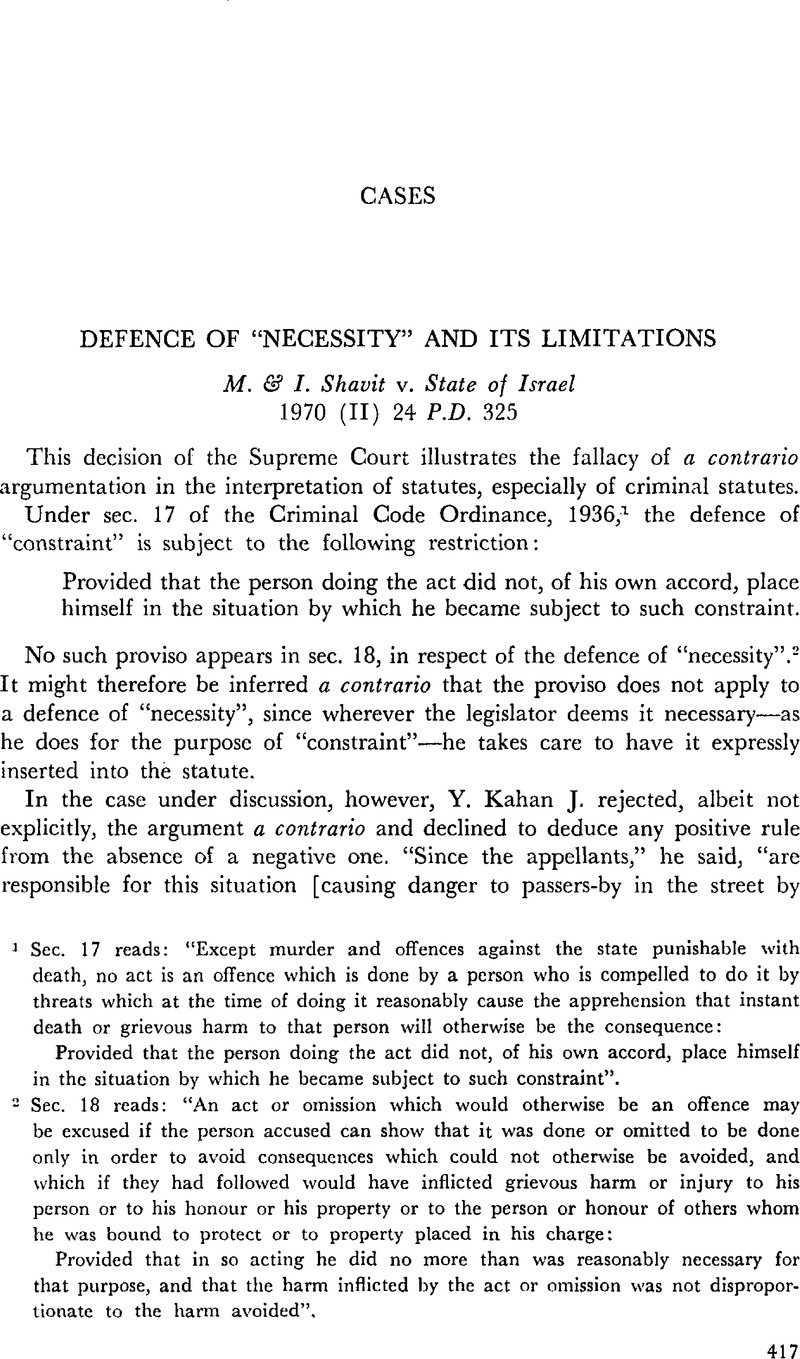No CrossRef data available.
Published online by Cambridge University Press: 12 February 2016

1 Sec. 17 reads: “Except murder and offences against the state punishable with death, no act is an offence which is done by a person who is compelled to do it by threats which at the time of doing it reasonably cause the apprehension that instant death or grievous harm to that person will otherwise be the consequence:
Provided that the person doing the act did not, of his own accord, place himself in the situation by which he became subject to such constraint”.
2 Sec. 18 reads: “An act or omission which would otherwise be an offence may be excused if the person accused can show that it was done or omitted to be done only in order to avoid consequences which could not otherwise be avoided, and which if they had followed would have inflicted grievous harm or injury to his person or to his honour or his property or to the person or honour of others whom he was bound to protect or to property placed in his charge:
Provided that in so acting he did no more than was reasonably necessary for that purpose, and that the harm inflicted by the act or omission was not disproportionate to the harm avoided”.
3 It should be noted that the appellants were prevented from carrying out the demolition work “legally” by the traders' failure to remove the stalls; and as regards the required protective fence, if the presence of the stalls had not made its erection impossible, the appellants would still have interfered with the stalls, for they were connected with the wall and the fence would have blocked access to them by owners and customers alike.
4 To simplify matters we shall refrain from discussing the question of proportion between these two injuries and from setting off actual damage caused to another person against potential damage to oneself.
5 On the same distinction in the field of civil law, see Englard, Tedeschi, Barak, and Cheshin, , The Law Of Torts (Jerusalem, Magnes Press, 1970) 281Google Scholar (by Englard).
6 And this will not relieve the agent of his liability for damages. See Tedeschi et al., op. cit., pp. 299–301 (by Barak).